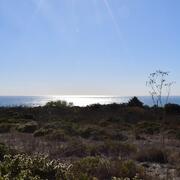National Water Availability data available now through the Data Companion
Explore, download, and use new datasets related to integrated water availability, supply and use.
USGS releases a comprehensive look at water resources in the United States
New National Water Availability Assessment offers critical insights into water supply, demand, and quality across the Nation.
Water Resources Mission Area
Water information is fundamental to national and local economic well-being, protection of life and property, and effective management of the Nation’s water resources. The USGS works with partners to monitor, assess, conduct targeted research, and deliver information on a wide range of water resources and conditions including streamflow, groundwater, water quality, and water use and availability.






